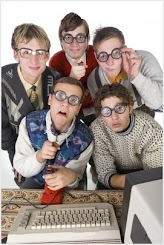0
Now we're getting somewhere....
Posted by Chris
on
Tuesday, November 24, 2009
Back from holidays - ok, not all the nerds went away, but not everyone is quite as dedicated to filling the blog with drivel as some of us, so things were on hold for a while. But the good news is, we're back!
And the even better news is that the day after we got back, we'd already arranged a meeting with our old pal Xing from NuElectronics. And what better place to meet up and sort out LCDs, charge-pump capacitors and all things techie, than in a busy cafe on Clapham Junction Station, at the height of rush-hour? No, we couldn't think of one either, so that's where we met up!
It's always nice to meet up with people and put a face to name (not all us nerds are socially inept, though sometimes it does feel that way!) and in no time at all, two and a half hours had flown by. Xing had some really good ideas for putting our ScoreSure device into production, including having "kits" made up, consisting of enclosure, boards, batteries and so on, ready to be programmed and assembled. We also discussed using a bootloader and the pros and cons of allowing end users to install their own firmware updates, and talked at some length about the future of ScoreSure even though we've yet to build a final, working prototype! In short, it was a really interesting and exciting meeting, and he has given us a deadline to work towards - he's away visiting factories and suppliers in China in December, so we've got just a few short weeks to get something designed and built, ready for prototype manufacturing.
At the end of the meeting, he presented us with a working 320x240 QVGA LCD, mounted on an Arduino board. We'd sent him one of our displays, on our own breakout board to see if the problem we'd had was the hardware (dodgy soldering/etching) or the software in the PIC. He has taken our screen off the dodgy breakout board, and put it onto one of his kits just to make sure that it actually worked (he did say he couldn't find a fault on our board, but neither could he get it working with his set-up either). He even went to the trouble of loading example code into the Arduino to demonstrate it working with our dodgy screen:

So now we have, in our grubby little mitts, a working LCD board mounted on a breakout board, ready to interface with our own PIC microcontrollers. Just as soon as we've worked out which voltages go to which pins, I'm sure it won't be long before the SureScore logo makes and appearance on a full-colour QVGA display.......
And the even better news is that the day after we got back, we'd already arranged a meeting with our old pal Xing from NuElectronics. And what better place to meet up and sort out LCDs, charge-pump capacitors and all things techie, than in a busy cafe on Clapham Junction Station, at the height of rush-hour? No, we couldn't think of one either, so that's where we met up!
It's always nice to meet up with people and put a face to name (not all us nerds are socially inept, though sometimes it does feel that way!) and in no time at all, two and a half hours had flown by. Xing had some really good ideas for putting our ScoreSure device into production, including having "kits" made up, consisting of enclosure, boards, batteries and so on, ready to be programmed and assembled. We also discussed using a bootloader and the pros and cons of allowing end users to install their own firmware updates, and talked at some length about the future of ScoreSure even though we've yet to build a final, working prototype! In short, it was a really interesting and exciting meeting, and he has given us a deadline to work towards - he's away visiting factories and suppliers in China in December, so we've got just a few short weeks to get something designed and built, ready for prototype manufacturing.
At the end of the meeting, he presented us with a working 320x240 QVGA LCD, mounted on an Arduino board. We'd sent him one of our displays, on our own breakout board to see if the problem we'd had was the hardware (dodgy soldering/etching) or the software in the PIC. He has taken our screen off the dodgy breakout board, and put it onto one of his kits just to make sure that it actually worked (he did say he couldn't find a fault on our board, but neither could he get it working with his set-up either). He even went to the trouble of loading example code into the Arduino to demonstrate it working with our dodgy screen:

So now we have, in our grubby little mitts, a working LCD board mounted on a breakout board, ready to interface with our own PIC microcontrollers. Just as soon as we've worked out which voltages go to which pins, I'm sure it won't be long before the SureScore logo makes and appearance on a full-colour QVGA display.......





Post a Comment